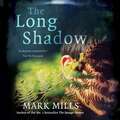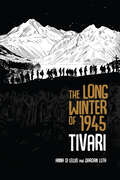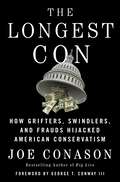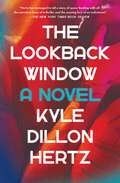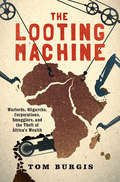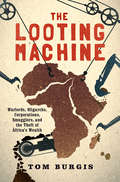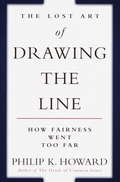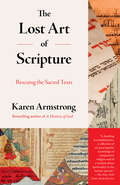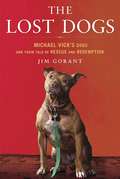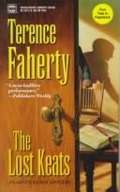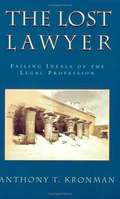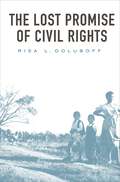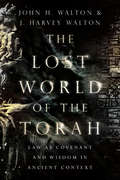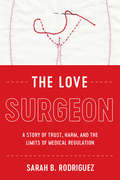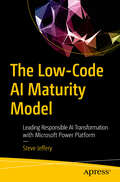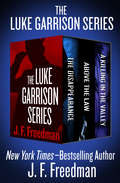- Table View
- List View
The Long Shadow
by Mark MillsFrom Mark Mills, author of the award-winning THE SAVAGE GARDEN comes THE LONG SHADOW, a first-class thriller in the vein of Robert Harris and William Boyd. Blood brothers or sworn enemies? You never forget what the fight was about... THE LONG SHADOW is a stunning depiction of resentment and revenge.Ben Makepeace has barely thought of Jacob since school. What he remembers is a competitive, manipulative boy, impinging on his life. Now Ben is the wrong side of forty with a young son to support and in need of a backer. A call to meet hedge-fund billionaire Victor Sheldon is promising, but there's a surprise in store - Victor is Jacob, now firmly entrenched in a gilded world of riches and glamour. History can cast a long shadow and while Ben believes his childhood is well over, he soon discovers the roots of the past dig deep.
The Long Shadow
by Mark MillsBen Makepeace has barely thought of Jacob since school. What he remembers is a competitive, manipulative boy, impinging on his life like a cuckoo planted in a nest. Now Ben is the wrong side of forty with a young son to support and in need of a backer to bankroll his latest film script. A call to meet hedge-fund billionaire Victor Sheldon is promising, but there's a surprise in store - Victor is Jacob, now firmly entrenched in a gilded world of riches and glamour.History can cast a long shadow and while Ben believes his childhood is well over, he soon discovers the roots of the past dig deep, and some can't let it go.(P)2013 Headline Digital
The Long Winter of 1945: Tivari
by Anna Di Lellio Dardan LutaIn March 1945, at the end of the Second World War, hundreds of unarmed Albanian recruits were massacred by Yugoslav partisans. For too long, the memory of this massacre in Tivari – a coastal town in Montenegro –was suppressed by the Yugoslav state and kept alive in Kosovo only in informal versions, nurtured and retold in a spirit of ethnic mistrust and hatred. Depicted in graphic format, The Long Winter of 1945 presents an oral history of this traumatic event based on interviews with surviving participants. Archival documents and historical research provide context, placing the massacre in the broader setting of forced mass mobilization to fight, as well as the last pocket of Italian resistance. The Long Winter of 1945 situates the eventsin Tivari into the broader context of Yugoslavia’s war for liberation and the civil war between Serbs and Albanians. Bringing this traumatic event to the fore, this beautifully illustrated graphic novel rescues the memory of the victims and survivors from political exploitation.
The Longest Con: How Grifters, Swindlers, and Frauds Hijacked American Conservatism
by Joe ConasonA sardonic chronicle of how conservatism turned into a racketeering enterprise – and why Donald Trump became the living emblem of the American right’s moral decay.The Longest Con tells the fascinating story of the partisan con artists who have corrupted conservative politics in our time, creating a toxic phenomenon that culminated in the election of Donald Trump, a bumptious fraud whose checkered career and tawdry retinue, including his presidential cabinet, have featured almost every variety of scam. But long before he appeared, Trump’s path to power was blazed by the motley horde of swindlers and quacks who preceded him.From the “professional anti-communists” (whose tactics even J. Edgar Hoover despised) to the “populist” grifters of the Tea Party movement and the religious charlatans of the “prosperity gospel” (who provided a pious front for Trump), the right-wing ripoff has remained remarkably consistent, even as personalities change and new technologies emerge: Stir up anger and resentment, demonize political opponents, promise vengeance, and collect donations from the gullible. It’s a highly lucrative game that any unscrupulous charlatan can play, as many have – and they are named in these pages.In an unsparing and often comic narrative, Joe Conason explores the right’s long, steep descent into a movement whose principal aim is not to protect freedom or defend the Constitution, but merely to line the pockets of pretenders and blowhards whose malevolent tactics now endanger the nation.
The Longest Night: Polemics and Perspectives on Election 2000
by Arthur J. Jacobson Michel Rosenfeld22 essays on the controversial 2000 presidential election, some from participants, some from contemporaneous observers, some from people who have analyzed the record afterward. About equal division between those who think the electoral and legal processes worked properly and gave satisfactory results, and those who are critical. Five are views from abroad.
The Longest Story: How humans have loved, hated and misunderstood other species
by Richard Girling&‘An extraordinary book&’ Nicholas Evans, author of The Horse Whisperer &‘Essential reading&’ Philip Lymbery, CEO of Compassion in World Farming and author of Farmageddon The history of humanity&’s relationship with other species is baffling. Without animals there would be no us. We are all fellow travellers on the same evolutionary journey. By charting the love–hate story of people and animals, from their first acquaintance in deep prehistory to the present and beyond, Richard Girling reveals how and where our attitudes towards animals began – and how they have persisted, been warped and become magnified ever since. In dazzling prose, The Longest Story tells of the cumulative influence of theologians, writers, artists, warriors, philosophers, farmers, activists and scientists across the centuries, now locking us into debates on farming, extinction, animal rights, pets, experiments and religion.
The Lookback Window: A Novel
by Kyle Dillon HertzNew York Times Editors&’ Choice Debutiful Best Book of the Year One of Crimereads Best Crime Novels of 2023 &“Hertz has managed to tell a story of queer healing with all the narrative force of a thriller and the searing fury of an indictment.&” —The New York Times Book Review A fearless debut novel of resilience, transcendence, and the elusive promise of justice.Growing up in suburban New York, Dylan lived through the unfathomable: three years as a victim of sex trafficking at the hands of Vincent, a troubled young man who promised to marry Dylan when he turned eighteen. Years later—long after a police investigation that went nowhere, and after the statute of limitations for the crimes perpetrated against him have run out—the long shadow of Dylan&’s trauma still looms over the fragile life in the city he&’s managed to build with his fiancé, Moans, who knows little of Dylan&’s past. His continued existence depends upon an all-important mantra: To survive, you live through it, but never look back. Then a groundbreaking new law—the Child Victims Act—opens a new way foreword: a one-year window during which Dylan can sue his abusers. But for someone who was trafficked as a child, does money represent justice—does his pain have a price? As Dylan is forced to look back at what happened to him and try to make sense of his past, he begins to explore a drug and sex-fueled world of bathhouses, clubs, and strangers&’ apartments, only to emerge, barely alive, with a new clarity of purpose: a righteous determination to gaze, unflinching, upon the brutal men whose faces have haunted him for a decade, and to extract justice on his own terms. &“Hertz writes with a powerful blend of publicly experienced scene and deeply private interiority...[he] expertly presents both the rapturous façade of post-closet gay life and the cracks in its hastily constructed foundation,&” (Slant). Hertz&’s debut is &“cathartic and revelatory…[and] a gritty recovery story that packs a punch&” (The Bay Area Reporter). It offers a startling glimpse at the unraveling of trauma—and the light that peeks, faintly, and often in surprising ways, from the other side of the window.
The Looting Machine
by Tom BurgisThe trade in oil, gas, gems, metals and rare earth minerals wreaks havoc in Africa. During the years when Brazil, India, China and the other "emerging markets” have transformed their economies, Africa’s resource states remained tethered to the bottom of the industrial supply chain. While Africa accounts for about 30 per cent of the world’s reserves of hydrocarbons and minerals and 14 per cent of the world’s population, its share of global manufacturing stood in 2011 exactly where it stood in 2000: at 1 percent. In his first book, The Looting Machine, Tom Burgis exposes the truth about the truth about the African development miracle: for the resource states, it's a mirage. The oil, copper, diamonds, gold and coltran deposits just attract a global network of traders, bankers, corporate extractors and investors who combine with venal political cabals to loot the states' value . And the vagaries of resource-dependent economies could pitch Africa’s new middle class back into destitution just as quickly as they climbed out of it. The ground beneath their feet is as precarious as a Congolese mine shaft; their prosperity could spill away like crude from a busted pipeline. This catastrophic social disintegration is not merely a continuation of Africa’s past as a colonial victim. The looting now is accelerating as never before. As global demand for Africa’s resources rises, a handful of Africans are becoming legitimately rich but the vast majority, like the continent as a whole, are being fleeced. Outsiders tend to think of Africa as a great drain of philanthropy. But look more closely at the resource industry and the relationship between Africa and the rest of the world looks rather different. In 2010, fuel and mineral exports from Africa were worth $333 billion, more than seven times the value of the aid that went in the opposite direction. But who received the money? For every Frenchwoman who dies in childbirth, 100 die in Niger alone, the former French colony whose uranium fuels France’s nuclear reactors. In petro-states like Angola three-quarters of government revenue comes from oil. The government is not funded by the people, and as result it is not beholden to them. A score of African countries whose economies depend on resources are rentier states; their people are largely serfs. The resource curse is not merely some unfortunate economic phenomenon, the product of an intangible force. What is happening in Africa’s resource states is systematic looting. Like its victims, its beneficiaries have names.
The Looting Machine
by Tom BurgisThe trade in oil, gas, gems, metals and rare earth minerals wreaks havoc in Africa. During the years when Brazil, India, China and the other "emerging markets” have transformed their economies, Africa’s resource states remained tethered to the bottom of the industrial supply chain. While Africa accounts for about 30 per cent of the world’s reserves of hydrocarbons and minerals and 14 per cent of the world’s population, its share of global manufacturing stood in 2011 exactly where it stood in 2000: at 1 percent. In his first book, The Looting Machine, Tom Burgis exposes the truth about the truth about the African development miracle: for the resource states, it's a mirage. The oil, copper, diamonds, gold and coltran deposits just attract a global network of traders, bankers, corporate extractors and investors who combine with venal political cabals to loot the states' value . And the vagaries of resource-dependent economies could pitch Africa’s new middle class back into destitution just as quickly as they climbed out of it. The ground beneath their feet is as precarious as a Congolese mine shaft; their prosperity could spill away like crude from a busted pipeline. This catastrophic social disintegration is not merely a continuation of Africa’s past as a colonial victim. The looting now is accelerating as never before. As global demand for Africa’s resources rises, a handful of Africans are becoming legitimately rich but the vast majority, like the continent as a whole, are being fleeced. Outsiders tend to think of Africa as a great drain of philanthropy. But look more closely at the resource industry and the relationship between Africa and the rest of the world looks rather different. In 2010, fuel and mineral exports from Africa were worth $333 billion, more than seven times the value of the aid that went in the opposite direction. But who received the money? For every Frenchwoman who dies in childbirth, 100 die in Niger alone, the former French colony whose uranium fuels France’s nuclear reactors. In petro-states like Angola three-quarters of government revenue comes from oil. The government is not funded by the people, and as result it is not beholden to them. A score of African countries whose economies depend on resources are rentier states; their people are largely serfs. The resource curse is not merely some unfortunate economic phenomenon, the product of an intangible force. What is happening in Africa’s resource states is systematic looting. Like its victims, its beneficiaries have names.
The Looting Machine: Warlords, Oligarchs, Corporations, Smugglers, and the Theft of Africa's Wealth
by Tom BurgisThe trade in oil, gas, gems, metals and rare earth minerals wreaks havoc in Africa. During the years when Brazil, India, China and the other "emerging markets” have transformed their economies, Africa’s resource states remained tethered to the bottom of the industrial supply chain. While Africa accounts for about 30 per cent of the world’s reserves of hydrocarbons and minerals and 14 per cent of the world’s population, its share of global manufacturing stood in 2011 exactly where it stood in 2000: at 1 percent. In his first book, The Looting Machine, Tom Burgis exposes the truth about the African development miracle: for the resource states, it's a mirage. The oil, copper, diamonds, gold and coltan deposits attract a global network of traders, bankers, corporate extractors and investors who combine with venal political cabals to loot the states' value. And the vagaries of resource-dependent economies could pitch Africa’s new middle class back into destitution just as quickly as they climbed out of it. The ground beneath their feet is as precarious as a Congolese mine shaft; their prosperity could spill away like crude from a busted pipeline. This catastrophic social disintegration is not merely a continuation of Africa’s past as a colonial victim. The looting now is accelerating as never before. As global demand for Africa’s resources rises, a handful of Africans are becoming legitimately rich but the vast majority, like the continent as a whole, is being fleeced. Outsiders tend to think of Africa as a great drain of philanthropy. But look more closely at the resource industry and the relationship between Africa and the rest of the world looks rather different. In 2010, fuel and mineral exports from Africa were worth $333 billion, more than seven times the value of the aid that went in the opposite direction. But who received the money? For every Frenchwoman who dies in childbirth, 100 die in Niger alone, the former French colony whose uranium fuels France’s nuclear reactors. In petro-states like Angola three-quarters of government revenue comes from oil. The government is not funded by the people, and as result it is not beholden to them. A score of African countries whose economies depend on resources are rentier states; their people are largely serfs. The resource curse is not merely some unfortunate economic phenomenon, the product of an intangible force. What is happening in Africa’s resource states is systematic looting. Like its victims, its beneficiaries have names.
The Lost Art of Drawing the Line: How Fairness Went Too Far
by Philip K. HowardThe Lost Art of Drawing the Line will appall and irritate -- and entertain -- readers every bit as much as Philip Howard's first book. Why is it that no one can fix the schools? Why do ordinary judgements fill doctors with fear? Why are seesaws disappearing from playgrounds? Why has a wave of selfish people overtaken America? In our effort to protect the individual against unfair decisions, we have created a society where no one's in charge of anything. Silly lawsuits strike fear in our hearts because judges don't think they have the authority to dismiss them. Inner-city schools are filthy and mired in a cycle of incompetence because no one has the authority to decide who's doing the job and who's not. When no one's in charge, we all lose our link to the common good. When principals lack authority over schools, of what use are the parents' views? When no one can judge right and wrong, why not be as selfish as you can be? Philip Howard traces our well-meaning effort to protect individuals through the twentieth century, with the unintended result that we have lost much of our individual freedom. Buttressed with scores of stories that make you want to collar the next self-centered jerk or hapless bureaucrat, The Lost Art of Drawing the Line demonstrates once again that Philip Howard is "trying to drive us all sane."
The Lost Art of Scripture: Rescuing the Sacred Texts
by Karen ArmstrongIn this timely and important book, one of the world's leading commentators on religious affairs examines the lost art of Scripture as a medium to lift humanity and change our perception of reality while evading logical explanation. Today the Quran is used by some to justify war and acts of terrorism, the Torah to deny Palestinians the right to live in the Land of Israel, and the Bible to condemn homosexuality and contraception. The significance of Scripture--the holy texts at the centre of all religious traditions--may not be immediately obvious in our secular world but its misunderstanding is perhaps the root cause of most of today's controversies over religion. In this timely and important book, one of the world's leading commentators on religious affairs examines the meaning of Scripture. Today holy texts are not only used selectively to underwrite sometimes arbitrary and subjective views: they are seen to prescribe ethical norms and codes of behaviour that are divinely ordained--they are believed to contain eternal truths. But as Karen Armstrong shows in this fascinating trawl through millennia of religious history, this peculiar reading of Scripture is a relatively recent, modern phenomenon--and in many ways, a reaction to a hostile secular world. For most of their history, the world's religious traditions have regarded these texts as tools for the individual to connect with the divine, to transcend their physical existence, and to experience a higher level of consciousness that helped them to engage with the world in more meaningful and compassionate ways. Scripture was not a "truth" that had to be "believed." Armstrong argues that only if the world's religious faiths rediscover such an open and spiritual engagement with their holy texts can they curtail the arrogance, intolerance and violence that flows from a narrow reading of Scripture as truth.
The Lost Art of Scripture: Rescuing the Sacred Texts
by Karen ArmstrongA book that shines fresh light on the world's major religions to help us build bridges between faiths and rediscover a creative and spiritual engagement with holy texts—from the New York Times bestselling author of A History of God&“[An] unusual, often dazzling, blend of theology, history, and neuroscience&” —The New YorkerThe significance of scripture may not be immediately obvious in our secular world, but its misunderstanding is perhaps the root cause of many of today's controversies. The sacred texts have been co-opted by fundamentalists, who insist that they must be taken literally, and by others who interpret scripture to bolster their own prejudices. These texts are seen to prescribe ethical norms and codes of behavior that are divinely ordained: they are believed to contain eternal truths. But as Karen Armstrong shows in this chronicle of the development and significance of major religions, such a narrow, peculiar reading of scripture is a relatively recent, modern phenomenon. For most of their history, the world's religious traditions have regarded these texts as tools that enable the individual to connect with the divine, to experience a different level of consciousness, and to help them engage with the world in more meaningful and compassionate ways.
The Lost Dogs: Michael Vick's Dogs and Their Tale of Rescue and Redemption
by Jim GorantAn inspiring story of survival and our powerful bond with man's best friend, in the aftermath of the nation's most notorious case of animal cruelty. Animal lovers and sports fans were shocked when the story broke about NFL player Michael Vick's brutal dog fighting operation. But what became of the dozens of dogs who survived? As acclaimed writer Jim Gorant discovered, their story is the truly newsworthy aspect of this case. Expanding on Gorant's Sports Illustrated cover story, The Lost Dogs traces the effort to bring Vick to justice and turns the spotlight on these infamous pit bulls, which were saved from euthanasia by an outpouring of public appeals coupled with a court order that Vick pay nearly a million dollars in "restitution" to the dogs. As an ASPCA-led team evaluated each one, they found a few hardened fighters, but many more lovable, friendly creatures desperate for compassion. In The Lost Dogs, we meet these amazing animals, a number of which are now living in loving homes, while some even work in therapy programs: Johnny Justice participates in Paws for Tales, which lets kids get comfortable with reading aloud by reading to dogs; Leo spends three hours a week with cancer patients and troubled teens. At the heart of the stories are the rescue workers who transformed the pups from victims of animal cruelty into healing caregivers themselves, unleashing priceless hope.
The Lost Family: How DNA Testing Is Upending Who We Are
by Libby Copeland“A fascinating exploration of the mysteries ignited by DNA genealogy testing—from the intensely personal and concrete to the existential and unsolvable.” —Tana French, New York Times–bestselling author You swab your cheek or spit in a vial, then send it away to a lab somewhere. Weeks later you get a report that might tell you where your ancestors came from or if you carry certain genetic risks. Or, the report could reveal a long-buried family secret that upends your entire sense of identity. Soon a lark becomes an obsession, a relentless drive to find answers to questions at the core of your being, like “Who am I?” and “Where did I come from?” Welcome to the age of home genetic testing.In The Lost Family, journalist Libby Copeland investigates what happens when we embark on a vast social experiment with little understanding of the ramifications. She explores the culture of genealogy buffs, the science of DNA, and the business of companies like Ancestry and 23andMe, all while tracing the story of one woman, her unusual results, and a relentless methodical drive for answers that becomes a thoroughly modern genetic detective story. Gripping and masterfully told, The Lost Family is a spectacular book on a big, timely subject.“An urgently necessary, powerful book that addresses one of the most complex social and bioethical issues of our time.” —Dani Shapiro, New York Times–bestselling author“Before you spit in that vial, read this book.” —The New York Times Book Review“Impeccably researched . . . up-to-the-minute science meets the philosophy of identity in a poignant, engaging debut.” —Kirkus Reviews (starred review)
The Lost Honor of Katharina Blum: Or, How Violence Develops and Where It Can Lead
by Heinrich Böll Leila Vennewitz Kurt AndersenNobel Prize winner Heinrich Böll?s powerful novel about a woman terrorized by the media In an era in which journalists will stop at nothing to break a story, Henrich Böll?s The Lost Honor of Katharina Blum has taken on heightened relevance. A young woman?s association with a hunted man makes her the target of a journalist determined to grab headlines by portraying her as an evil woman. As the attacks on her escalate and she becomes the victim of anonymous threats, Katharina sees only one way out of her nightmare. Turning the mystery genre on its head, the novel begins with the confession of a crime, drawing the reader into a web of sensationalism, character assassination, and the unavoidable eruption of violence.
The Lost Keats ( An Owen Keane Mystery #3)
by Terence Faherty[from the back cover] "FROM KEATS TO A KILLER... A man with more questions than answers, Owen Keane has one foot in the priesthood, the other in detective novels--a trait that finds him questioning his own vocation. So when a fellow seminarian disappears, Owen sees it as a chance to unravel a mystery, and perhaps his own inner struggles. But it's not until he meets a descendant of the English poet John Keats that scattered clues fall into place. At the center is a missing sonnet, but from there things turn modern--with marijuana and murder adding to the mystery that becomes deadly as Owen gets closer to the truth... and to a killer with a message just for him." Check the Bookshare collection for more books in the Owen Keane series about a young man whose love of reading mysteries leads him to investigate crime as he moves toward his future uncertain whether he is suited to become a priest. Look for #1. Deadstick, #2. Live to Regret, #3. The Lost Keats, #4. Die Dreaming, #5. Prove the Nameless, #6. The Ordained, #7. Orion Rising and #8. Eastward in Eden.
The Lost Lawyer: Failing Ideals of the Legal Profession
by Anthony T. KronmanAnthony Kronman describes a spiritual crisis affecting the American legal profession, and attributes it to the collapse of what he calls the ideal of the lawyer-statesman: a set of values that prizes good judgment above technical competence and encourages a public-spirited devotion to the law. <p><p> For nearly two centuries, Kronman argues, the aspirations of American lawyers were shaped by their allegiance to a distinctive ideal of professional excellence. In the last generation, however, this ideal has failed, undermining the identity of lawyers as a group and making it unclear to those in the profession what it means for them personally to have chosen a life in the law. <p> A variety of factors have contributed to the declining prestige of prudence and public-spiritedness within the legal profession. Partly, Kronman asserts, it is the result of the triumph, in legal thought, of a counterideal that denigrates the importance of wisdom and character as professional virtues. Partly, it is due to an array of institutional forces, including the explosive growth of the country's leading law firms and the bureaucratization of our courts. The Lost Lawyer examines each of these developments and illuminates their common tendency to compromise the values from which the ideal of the lawyer-statesman draws strength. It is the most important critique of the American legal profession in some time, and an an enduring restatement of its ideals.
The Lost Promise of Civil Rights
by Risa L. GoluboffListen to a short interview with Risa GoluboffHost: Chris Gondek | Producer: Heron & CraneIn this groundbreaking book, Risa L. Goluboff offers a provocative new account of the history of American civil rights law. The Supreme Court's decision in Brown v. Board of Education has long dominated that history. Since 1954, generations of judges, lawyers, and ordinary people have viewed civil rights as a project of breaking down formal legal barriers to integration, especially in the context of public education. Goluboff recovers a world before Brown, a world in which civil rights was legally, conceptually, and constitutionally up for grabs. Then, the petitions of black agricultural workers in the American South and industrial workers across the nation called for a civil rights law that would redress economic as well as legal inequalities. Lawyers in the new Civil Rights Section of the Department of Justice and in the NAACP took the workers' cases and viewed them as crucial to attacking Jim Crow. By the time NAACP lawyers set out on the path to Brown, however, they had eliminated workers' economic concerns from their litigation agenda. When the lawyers succeeded in Brown, they simultaneously marginalized the host of other harms--economic inequality chief among them--that afflicted the majority of African Americans during the mid-twentieth century. By uncovering the lost challenges workers and their lawyers launched against Jim Crow in the 1940s, Goluboff shows how Brown only partially fulfilled the promise of civil rights.
The Lost World of the Torah: Law as Covenant and Wisdom in Ancient Context (The Lost World Series #Volume 6)
by John H. Walton J. Harvey WaltonOur handling of what we call biblical law veers between controversy and neglect. On the one hand, controversy arises when Old Testament laws seem either odd beyond comprehension (not eating lobster) or positively reprehensible (executing children). On the other, neglect results when we consider the law obsolete, no longer carrying any normative power (tassels on clothing, making sacrifices). Even readers who do attempt to make use of the Old Testament "law" often find it either irrelevant, hopelessly laden with "thou shalt nots," or simply so confusing that they throw up their hands in despair. Despite these extremes, people continue to propose moral principles from these laws as "the biblical view" and to garner proof texts to resolve issues that arise in society. The result is that both Christians and skeptics regularly abuse the Torah, and its true message often lies unheard. Walton and Walton offer in The Lost World of the Torah a restorative vision of the ancient genre of instruction for wisdom that makes up a significant portion of the Old Testament. In the ancient Near East, order was achieved through the wisdom of those who governed society. The objective of torah was to teach the Israelites to be wise about the kind of order needed to receive the blessings of God’s favor and presence within the context of the covenant. Here readers will find fresh insight on this fundamental genre of the Old Testament canon.
The Love Surgeon: A Story of Trust, Harm, and the Limits of Medical Regulation (Critical Issues in Health and Medicine)
by Sarah B. RodriguezDr. James Burt believed women’s bodies were broken, and only he could fix them. In the 1950s, this Ohio OB-GYN developed what he called “love surgery,” a unique procedure he maintained enhanced the sexual responses of a new mother, transforming her into “a horny little house mouse.” Burt did so without first getting the consent of his patients. Yet he was allowed to practice for over thirty years, mutilating hundreds of women in the process. It would be easy to dismiss Dr. Burt as a monstrous aberration, a modern-day Dr. Frankenstein. Yet as medical historian Sarah Rodriguez reveals, that’s not the whole story. The Love Surgeon asks tough questions about Burt’s heinous acts and what they reveal about the failures of the medical establishment: How was he able to perform an untested surgical procedure? Why wasn’t he obliged to get informed consent from his patients? And why did it take his peers so long to take action? The Love Surgeon is both a medical horror story and a cautionary tale about the limits of professional self-regulation.
The Low-Code AI Maturity Model: Leading Responsible AI Transformation with Microsoft Power Platform
by Steve JefferyWritten from the perspective of an experienced IT expert, this book leverages a maturity model framework to guide organizations through each stage of adopting, securing, scaling, and tracking the value of low-code AI responsibly and efficiently. Unlike other works that focus only on AI&’s technical aspects, this book boasts a practical roadmap for responsible AI adoption and provides a clear, structured maturity model that guides organizations from foundational steps to advanced, responsible AI practices. In a world where organizations are under pressure to innovate quickly and responsibly, this book provides a structured approach, addressing essential elements such as data management, governance, ethics and compliance in low-code AI environments. Each chapter represents a maturity level, from foundational to optimized, offering readers insights, practical steps and examples to support their journey. The Low-Code AI Maturity Model takes a comprehensive look into the transformative potential of low-code and AI. What You Will Learn Identify, assess and mitigate risks to ensure stable and reliable AI deployments Implement robust governance, aligning with compliance standards and ethical principles at each maturity stage Evaluate the real business value and ROI of AI projects, empowering data-driven decision-making Who This Book Is For <p class
The Luckiest Guy in the World: My Journey in Politics
by Robert AbramsThe Remarkable True Story of Robert Abrams, the man who changed the New York Attorney General's Office for Good. At the heart of this political memoir is the story of how the office of state attorney general, an historically sleepy backwater post, has evolved into a front line major protector of the rights of citizens across the country. New York State Attorney General Robert Abrams exercised leadership in organizing attorneys general throughout the nation to take collective action against the Reagan administration&’s punishing laissez-faire anti-regulatory policies. Abrams and his fellow attorneys general set the precedent for the successful challenges mounted by today&’s attorneys general against the Trump administration&’s immigration policies and rollback of consumer and civil rights protections. Through lively anecdotes, Abrams captures the Bronx of his childhood, his early insurgent grassroots campaigns taking on the powerful Democratic Party machine, the urban challenges of being Bronx Borough President, the turbulent Vietnam anti-war years, and the beginnings of the environmental justice movement. He revisits the explosive Tawana Brawley case where an African American teenage girl alleged rape and brutality by a group of white men that included law enforcement officials. Abrams provides behind-the-scenes interactions with important figures ranging from Golda Meir, George McGovern, Mario Cuomo, Robert Moses, and Cesar Chavez to Shirley Chisholm. The book demonstrates how ordinary people battling unequal odds against corporate and other powerful forces can prevail when laws are enforced to protect their rights. A chapter about the infamous Love Canal case details the shocking revelation that buried beneath the seemingly placid upstate New York working class community lay tons of toxic waste spawning chronic health problems for residents. Abrams in a landmark lawsuit took on Occidental Petroleum for its callous actions, paved the way for the passage of the Superfund Act and a victory for the emerging environmental justice movement. He describes dramatic confrontations with the radical anti-abortion group, Operation Rescue, and its increasingly violent efforts to deny a woman&’s right to choose. His courageous, path-breaking support of LGBT rights, seeking to end the prevailing bigotry with legal victories that ultimately led to marriage equality is also revisited. In The Luckiest Guy in the World, Robert Abrams wears his progressive values on his sleeve, providing an optimistic view about our nation&’s return to its fundamental values. Visit luckiestguyintheworldbobabrams.com for more information.
The Lucky Ones
by Jenny BrownJonathan Safran Foer meets Jeffrey Moussaieff Mason in a poignant, provocative memoir of survival, compassion, and awakening to the reality of our food system. Jenny Brown was ten years old when she lost a leg to bone cancer. Throughout the ordeal, her constant companion was a cat named Boogie. Years later, she would make the connection between her feline friend and the farm animals she ate, acknowledging that most of America's domesticated animals live on industrialized farms, and are viewed as mere production units. Raised in a conservative Southern Baptist family in Kentucky, Brown had been taught to avoid asking questions. But she found her passion and the courage to speak out. The Lucky Ones introduces readers to Woodstock Farm Animal Sanctuary which Brown established with her husband in 2004. With a cast of unforgettable survivors, including a fugitive slaughterhouse cow named Kayli; Albie, the three-legged goat; and Quincy, an Easter duckling found abandoned in New York City, The Lucky Ones reveals shocking statistics about the prevalence of animal abuse throughout America's agribusinesses. Blending wry humor with unflinching honesty, Brown brings a compelling new voice to the healthy-living movement--and to the vulnerable, voiceless creatures among us.
The Luke Garrison Series: The Disappearance, Above the Law, and A Killing in the Valley (The Luke Garrison Series)
by J. F. FreedmanThe New York Times–bestselling series featuring a renegade California legal eagle that&’s &“impossible to put down&” (Entertainment Weekly). Award-winning filmmaker and author of Against the Wind J. F. Freedman writes thrillers with &“plenty of twists and turns&” (Chicago Tribune). The Luke Garrison mysteries are &“compelling . . . taut, moving and wonderfully told&” (Robert B. Parker). The Disappearance: Luke Garrison was a celebrated Santa Barbara DA—until he mistakenly sent a man to the gas chamber. Now, when the daughter of a media tycoon is murdered and the city is crying out for blood, Garrison has the unenviable job of defending the accused. And with so many false leads, family secrets, and killer twists, Garrison&’s life and career are on trial too. Above the Law: In this New York Times bestseller, Luke Garrison must investigate a government cover-up. After a DEA raid ends in the death of a notorious drug overlord, defense attorney Garrison is persuaded by his old colleague Nora Ray to investigate. She&’s convinced that the murder of the vicious kingpin is not what it seems—but rather part of a greater conspiracy that&’s now drawing them into the line of fire. A Killing in the Valley: Maria Estrada, a hard-partying girl with family ties to some of the toughest gangsters in California, has been raped and murdered in the mansion of one the wealthiest landowners in the Santa Ynez Valley. Attorney Luke Garrison and PI Kate Blanchard must locate the elusive connection between the poverty where Maria was raised and the affluence of where she died.

